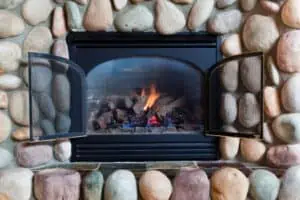How to Run a Propane Gas Line to a Fireplace?
If you’re thinking about installing a propane gas fireplace, you’ll likely be wondering how to run a line to it. Before you try this, there are a few things you should know about running a line. These include the cost, the different types of gas lines and the safety considerations.
(Searching in Google “gas fireplace maintenance companies near me“? Contact us today!)

Cost of running a propane gas line to a fireplace
The cost of running a gas line to a fireplace depends on the length and type of gas line. A natural gas fireplace will cost around $150 to $600 to install, while a propane fireplace will cost between $20 and $30 per foot. Running a gas line is generally the least expensive option, but it does require trenching in some areas. The cost of trenching can range from $4 to $12 per linear foot. The cost of laying the gas line may be further increased by landscaping and other costs.
A gas fireplace can be anywhere from 8,000 BTU to 40,000 BTU. You can find models that are sized for rooms of 100 to 2,000 square feet. The cost of running a propane gas line to a fireplace can vary from month to month, depending on where you live and what type of gas fireplace you choose. The cost of running a propane gas line to a fireplace can range anywhere from a few hundred dollars to a few thousand dollars, so it is important to do some research and plan accordingly.
Types of natural gas lines
Natural gas lines are used to run from a gas utility to your home. There are two different types of lines: horizontal and vertical. In the case of a horizontal line, you may have a steel pipe buried in the ground. This pipe is then threaded and cut to length. Then, it rises up through the yard and connects to the meter. This pipe may have a shut-off valve at the end.
The two types of gas lines are the main and branch lines. The main line runs inside the house, and the branch lines are smaller and run to individual appliances. These branch lines terminate in drop lines. If the drop line carries the gas up from the branch line below the appliance, it’s called a riser.
Safety considerations for running a propane gas line to a fireplace
Propane gas is a dangerous gas if not used properly, so safety is of the utmost importance when running a propane gas line to a gas fireplace. You should check the gas piping for leaks and damage and tighten fittings with appropriate tools. Propane requires proper ventilation in order to prevent fire and explosion hazards. Propane is heavier than air, so it is essential to install a brick-sized vent to allow air to circulate in and out of the pit.
Propane gas fireplaces can be vented or vent-free. Make sure the vents are clear of debris. Always keep at least three feet between a gas fireplace and a flammable object.

